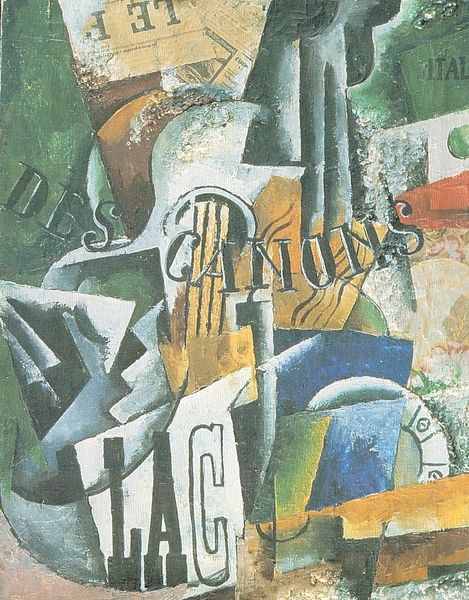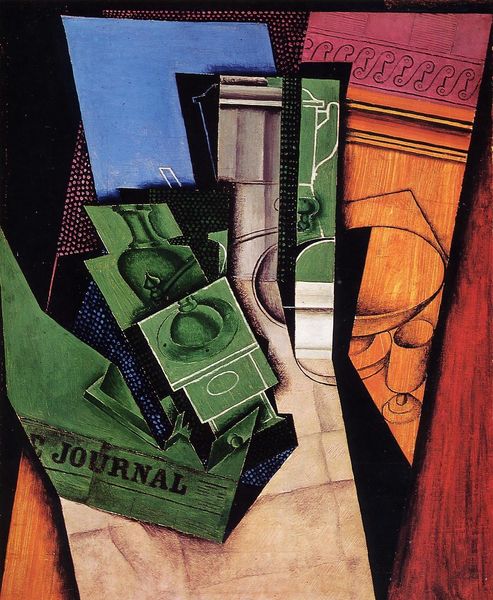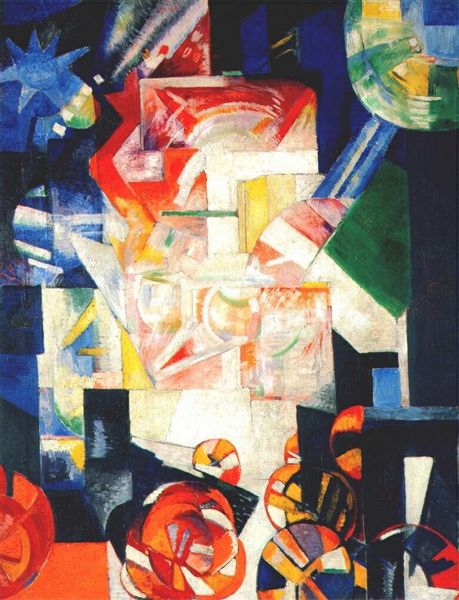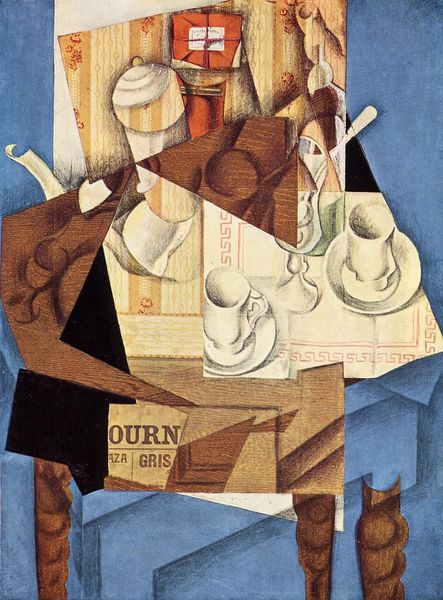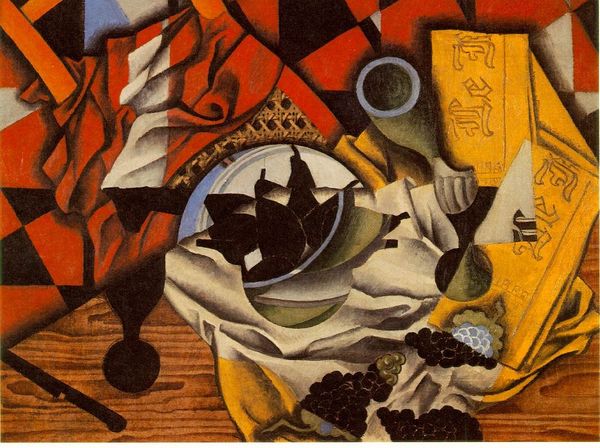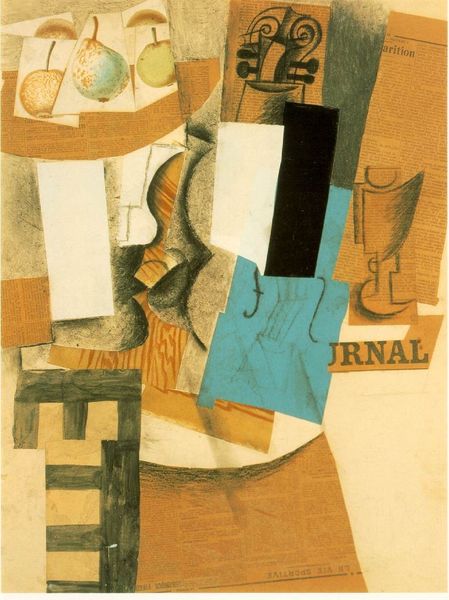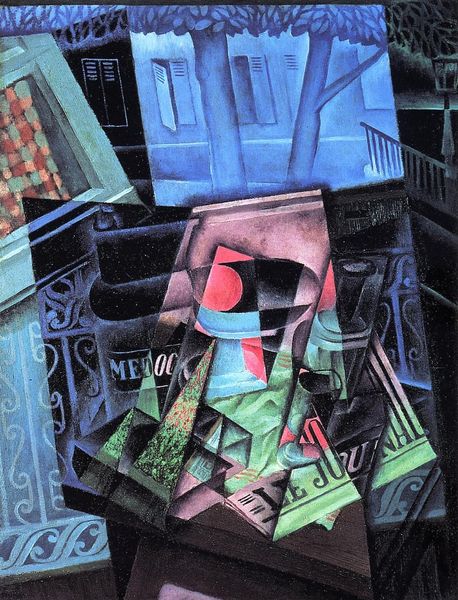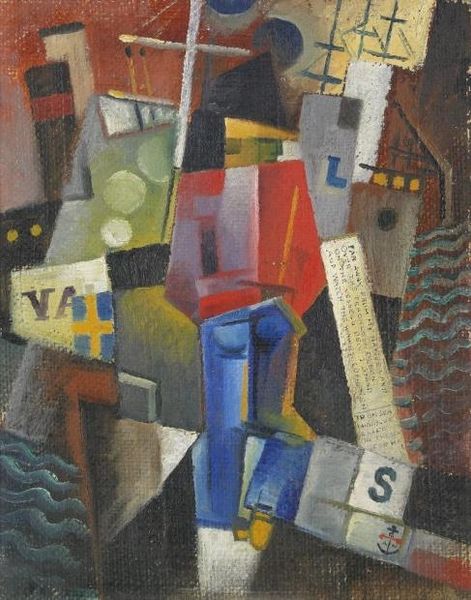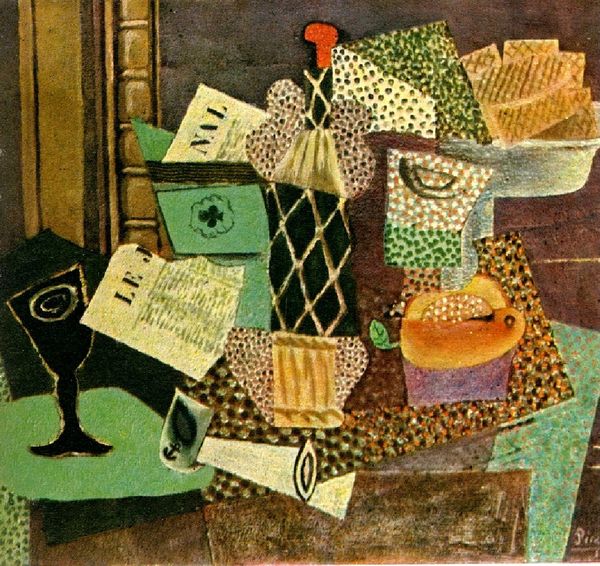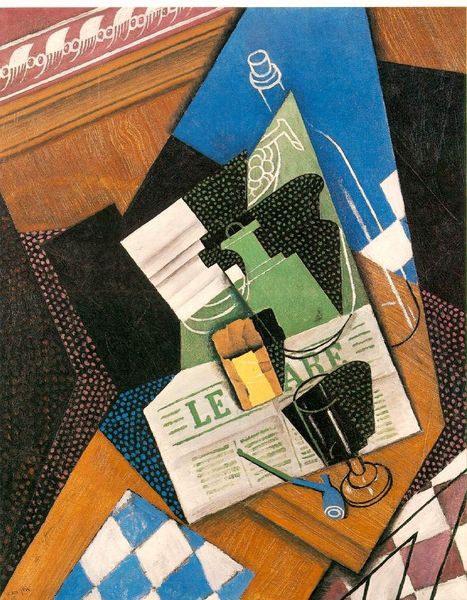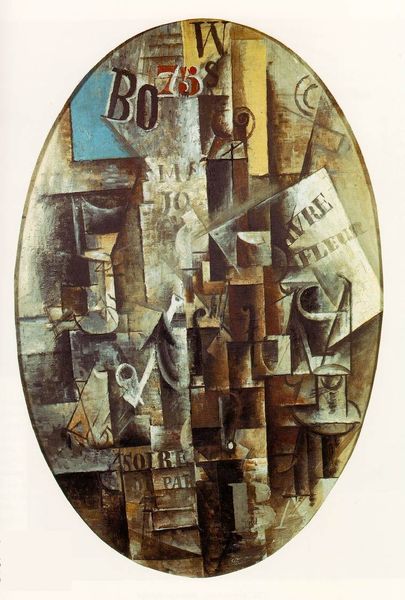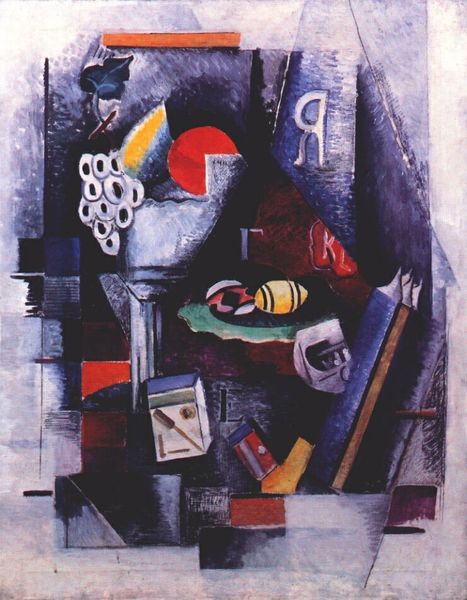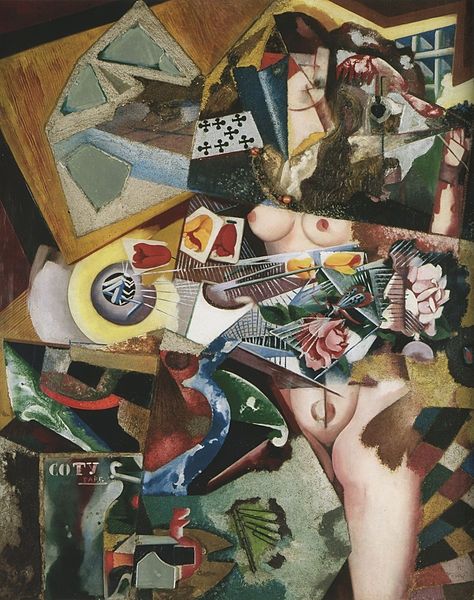
mixed-media, collage, oil-paint, textile
#
cubism
#
mixed-media
#
collage
#
narrative-art
#
oil-paint
#
landscape
#
textile
#
oil painting
#
paste-up
#
abstraction
#
history-painting
#
mixed media
#
futurism
Copyright: Public domain US
Curator: Before us hangs Gino Severini's 1913 mixed-media artwork, "Train of the Wounded," currently held in the Stedelijk Museum in Amsterdam. Editor: It’s a chaotic jumble, isn't it? At first glance, it’s a storm of forms and colours. There’s a visual tension; I'm not sure whether it's building or collapsing. Curator: Indeed. Severini, deeply involved with Futurism at this point, is attempting to capture not just a static image, but the dynamism of movement, the energy, even the cacophony surrounding this wartime scene. Look at how he's fractured the image plane, superimposing different perspectives. Editor: The integration of collage elements – textile, pasted paper – further disrupts any coherent spatial reading. The textures play against the oil paint. A fragment of Le Figaro competes with glimpses of landscape. He is certainly embracing materiality to complicate signification. Curator: Precisely. And consider the symbols employed: The Red Cross, the French flag, fragments of text, even numbers— all hinting at specific socio-political meanings that interweave to communicate the experience. Notice too, the implied movement indicated by the radiating lines, suggesting the train speeding past the locations denoted by text labels like "Igny" and "Bievre". The color palette enhances the tension. The reds and greens vie for attention against earth tones. Editor: So it's an active declaration of the disruption caused by the mechanization of war – representing an ideological struggle in abstract and semi-representational modes. What does Severini do, politically, with such disruption? I find the heroic tone somewhat offset by this aesthetic of breakage and violence. Curator: Severini presents not so much a glorification of war as an attempt to articulate its fragmented and jarring reality, and it is this reality as spectacle which becomes enmeshed with futurist aesthetics. Consider the work as an exercise in making war legible, perhaps even manageable, to his viewership. The painting reflects the tensions that preceded Italy’s entry into WWI. Editor: In his fusion of artistic materials and historical content, Severini provides a compelling example of an artist confronting and engaging with a rapidly changing world. Curator: It does make one reflect on the power of art to address such difficult chapters in human history. Thank you.
Comments
No comments
Be the first to comment and join the conversation on the ultimate creative platform.
